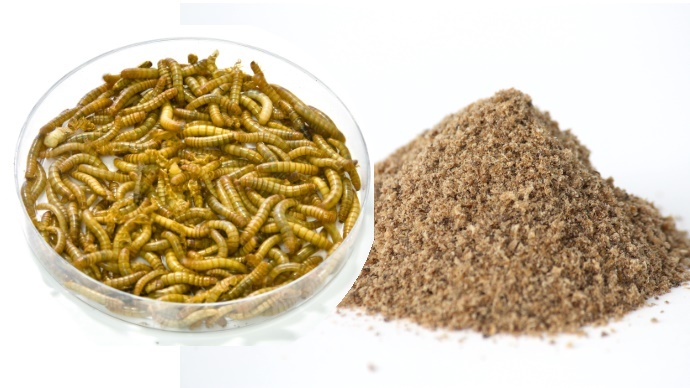Insect flour, future of animal nutrition ?
According to the FAO we will be 9 billion people on earth by 2050. This will cause a lack of water, farming lands and biodiversity to produce the animal proteins needed for livestock and human nutrition.
A sustainable alternative to traditional animal flour (meat and fish) would be the production and use of insect proteins.
Why insects ?
Insects have always been part of the diet of animals and humans. Indeed nearly 2.5 billion people consume it regularly, and are an integral part of the diet of most wildlife:
- 40% in trout
- Up to 50% in poultry, pheasants or growing partridges
- 5% in wild boars
- 3% in cats and dogs
Insects are rich in high quality proteins, fatty acids and essential amino acids, and are therefore the ideal candidates for the substitution of animal proteins used especially in the diet of fish and domestic animals.
Development challenge
The need for insect flours in animal nutrition can be estimated at 100,000 tons per year in the long term. To be able to answer this request it is important to find efficient breeding methods on a large scale. In France, their number is constantly increasing, but they come up against certain technical and regulatory obstacles.
Actually the industrial breeding is energy-consuming, the storage of the larvae in mass causes a heating, the insects being ectotherms (does not regulate their temperature) it is necessary to control the temperature in breeding places. To dissipate this heat, solutions are needed to stir the mixture and circulate air between the layers and these systems consume large amounts of electricity. Species choice; reproduction mastery, raw material supply management and the management of the sizing and processing of finished products will determine production viability.
In addition, the sector faces regulatory blockages:
- Prohibition of the use of animal protein in farmed animal feed
- Limitation of permitted substrates as insect feeds: no manure or slurry, no restorative waste or expired food.
Nevertheless since July 1st it is allowed to use insect meal in the diet of farmed fish. So today insect flours are allowed only for fish feed and pet food.
Tests performed
As shown in the table below, experiments with 3 mm extruded feed containing 30% Hermetia illucens flour underscore digestibility of crude protein and lipids above vegetable meal.
| Digestibilité | Bar | Truite |
| Protéines brutes | 91.8 | 87.1 |
| Lipides | 93.5 | 92.9 |
There are many benefits to insect flours, such as being high in high-quality protein, essential fatty acids and amino acids, highly digestible, and breeding that conserves natural resources. In order for these flours to become an essential component of animal feed and no longer a niche market, the price factor is crucial. They must be able to compete with fishmeal in fish feed and meat flours in the Pet Food, the only species where they are allowed today.
